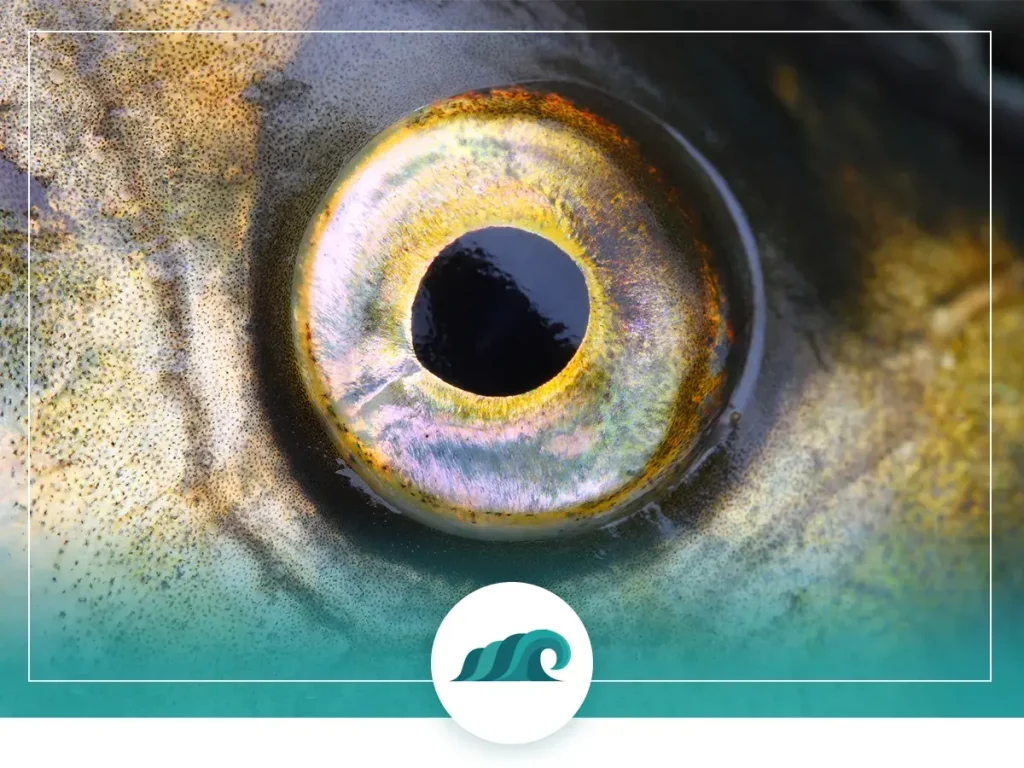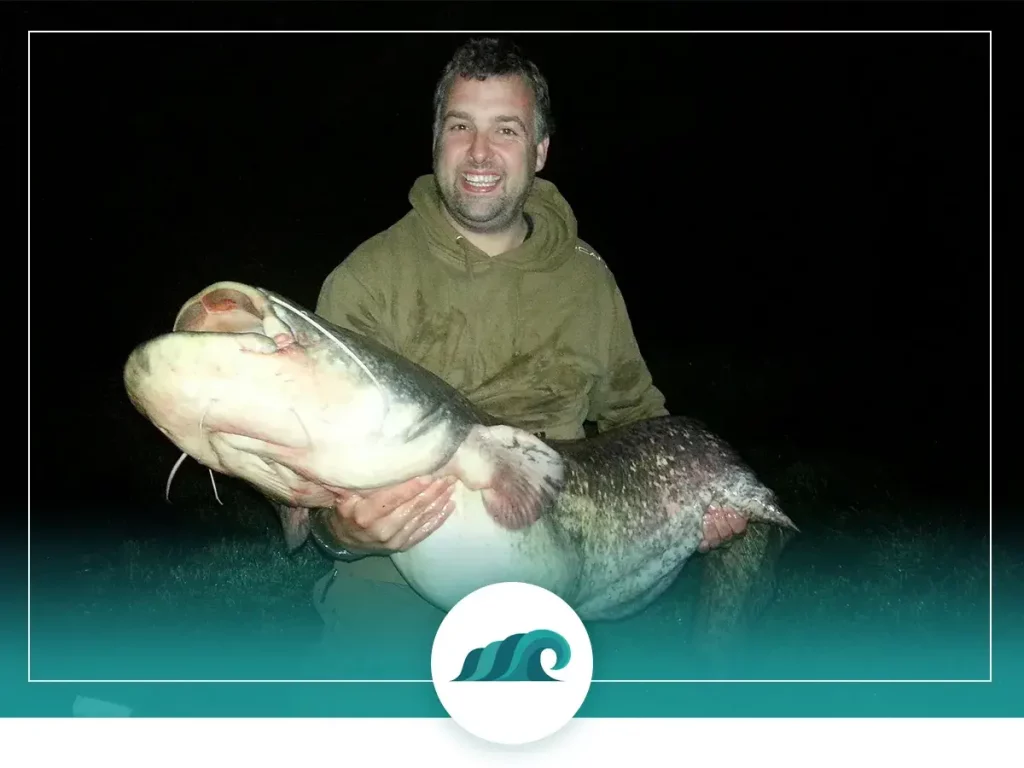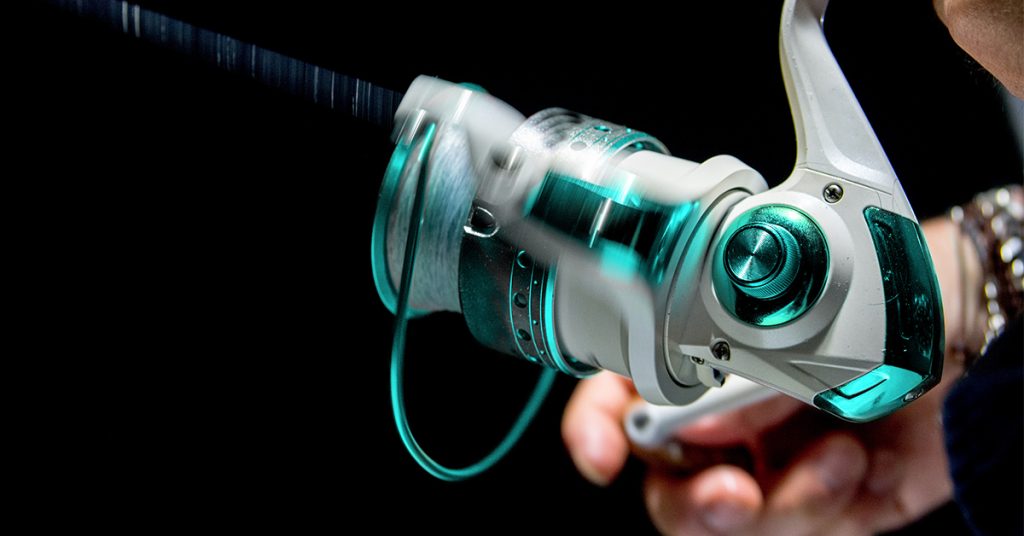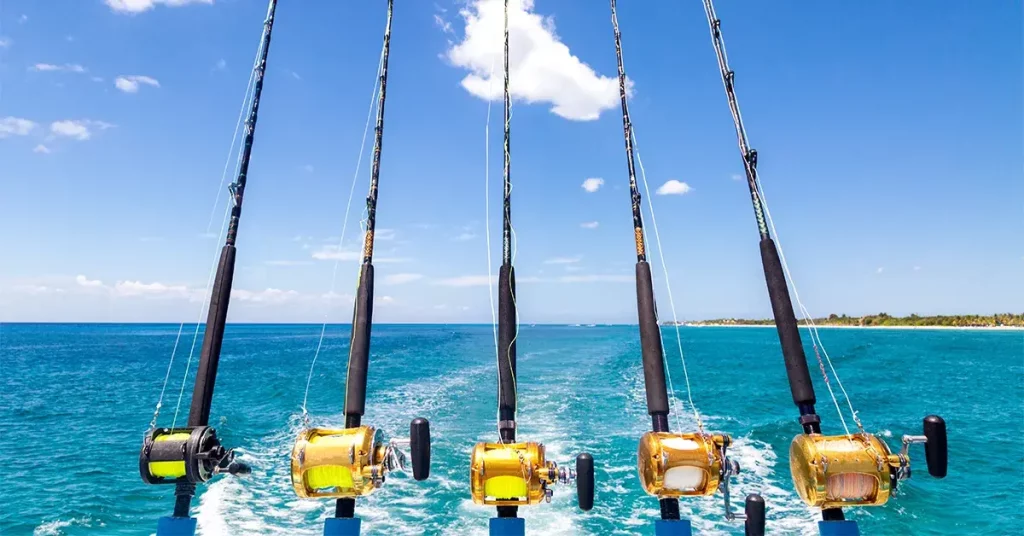Have you ever wondered to yourself “Can fish see in the dark?” How are they able to navigate murky dark waters that humans would find blinding?
Many anglers, aquarium owners and curious observers have wondered about this exact topic. Are fish able to see lures or bait in the dark? And if not – how are they able to detect bait and bite onto it? If you own an aquarium, how should you manage the lighting situation so your fish are as comfortable as possible?
In order to answer these questions we’ll delve into some of the biology behind fish vision, the sensory perceptions of different fish species – and how you can take advantage of this as an angler.
What is Night Vision in Animals?
Night vision is a physiological phenomenon seen in certain animals which allows them to see in low light or complete darkness. While most animals rely on organic eyesight as their primary form of vision, night vision allows creatures to more easily detect food sources, observe predators, and hunt prey, even at night.
This additional sensory capability is likely an evolutionary advantage that has allowed some animals to become successful hunters and survive through millennia. Many species utilize specialized photoreceptors to convert the varying amounts of visible light into electrical signals for the animal’s visual cortexes where these inputs are then processed to build a final image.
Anatomically, these structures appear as facets across their eyes with short distances between each component so that they can better detect even small levels of visual energy from dim sources. Through this extraordinary development, we can only marvel at the incredible adaptation abilities of nature.
Do Fish Have Night Vision?
Did you know that all fish have some degree of night vision? This is an amazing adaptation that enables them to survive in deep and dark water. The fact that they can navigate the world around them at night has helped a number of species thrive, allowing them to capture prey and find shelter more quickly.
Even more impressive is that certain species even use their night vision to detect predators lurking nearby. With this adaptation, aquatic life forms never have to worry about being caught off guard in the dark depths of the sea.
Fish Vision Explained

Fish vision is different from terrestrial animal vision. This is because light waves behave differently in the aquatic environment that fish inhabit.
Water absorbs some wavelengths of light faster than others. For example, red and orange light is absorbed within the first 30 meters of water, while blue and green light can penetrate all the way down to 200 meters below the surface. That’s why deep-sea fish are often red colored – the lack of red light perception makes them appear black, and thus less visible to predators and prey.
Water clarity can also be a major factor in what fish are able to see. Depending on the time of year, wind, rain, algae, dam water and snow melt can change the water clarity from ‘gin clear’ to dark and murky. In the most pristine water conditions, fish are only able to see about 100 feet away. In murkier water, their vision is limited to a few inches, similar to being in a perpetual dense fog.
Structurally, fish eyes are similar to our own. The major difference is that fish lenses are generally more dense and spherical than human eyes. These rounded lenses give them better peripheral vision. They also are able to bend light and focus it on their retinas better than we are – which makes them able to take advantage of low light situations.
Fish Vision at Different Depths

Fish that live in the surface waters within 200 meters of the surface, known as egipelagic fish, primarily use their vision for hunting prey and escaping predator fish. These fish typically do not have adaptations for ultra-low light conditions. Some examples of fish at this depth would be herring, mackerel, tuna and most sharks.
The next level below is known as the mesopelagic zone. This zone extends from 200 meters down to 1000 meters below the ocean’s surface. Light levels are greatly reduced at these depths and as a result fish here have large eyes with big lenses, which provide sensitivity to the smallest light signals.
Many species have upwards facing eyes to detect prey animals silhouetted against the dim light above them. This adaptation means they sacrifice lateral (sideways) vision in favor of terminal vision. Some fish that live at this level are lanternfish, barreleye and Bigeye tuna.
Below this level it’s completely pitch black. No light from the surface can penetrate this deep. This layer is known as the bathypelagic or midnight zone.
Fish living here have highly specialized adaptations to deal with the lack of light and high pressure. They do not rely on vision, and instead operate on sense of smell, sound and their lateral line. Many also incorporate bioluminescence (producing their own light) to hunt or find a mate. Some examples of fish residing at these depths are the anglerfish, bristlemouth, fangtooth and barracudina.
How Do Fish See in the Dark?

It’s easy to assume that because we have a hard time seeing in the dark that other animals have the same issue. Fish have a number of adaptations that make them less dependent on vision and better able to navigate in low-light environments.
Many fish have a unique sensory system known as a lateral line that runs across the length of their bodies. This is a series of organs (called neuromasts) which detect movement, vibration and pressure change in the surrounding water. It plays a key role in spacial awareness, hunting for prey and schooling behavior.
As mentioned previously, many fish also have good night vision due to their large rounded lenses. This means they are able to take advantage of the light reflected by the moon and stars to see.
Other fish are able to sense their environment using magnetoception and chemoreception. Catfish use chemoreception to “taste” and “smell” everything in the water around them using their incredible sense of smell. Sharks and rays are able to use special sensory organs known as ampullae of Lorenzini detect slight variations in electrical fields in the water around them.
How to Catch Fish at Night?

Catching fish at night is a different beast from daytime fishing.
Fish behave differently at night – and depending on the species they may be more active than during the day. Walleye, carp, and catfish are all particularly active during the nighttime hours.
During the summer months many fish species are sluggish from the heat during the day, but come out to feed at night. In many areas, winds tend to blow less during the night, which means calmer fishing waters.
If you’re fishing spot is busy with boats and Jet Ski’s during the day, then night fishing is a great opportunity to fish in calm undisturbed water – plus you get to beat the heat!
Fishing at night means being properly prepared – you don’t want to be searching around in your tackle box for lures in the dark! Rigging up several rods in advance is a smart move. Also, bringing a fishing headlamp, a well-organized tackle box, and a pair of fish grippers will ensure you’re well prepared to deal with any situation.
Fish also feed differently in the dark than during the day. They rely more on their lateral line to detect movement and vibration in the water. This means noisy, moving bait like chatterbait, buzzbait or any bait with moving parts will help you catch more fish. Make sure to keep the bait moving to attract more fish.
If you’re new to night fishing, you’ll quickly find it’s more about feeling than vision. Not only do the fish rely more on their sense of feeling – so will you!
What Happens If You Leave a Fish in the Dark?
If a fish is left in the dark it may develop an array of health issues. The prolonged lack of light can disturb their regular sleeping patterns, cause stress, and even impact their metabolism. This can lead to lethargy, loss of vitality, and decreased appetite which often results in their overall general health and vigor gradually deteriorating.
Fish also rely on light to ensure they migrate and reproduce successfully so a lack of proper exposure can lead to long-term problems for populations. Moreover, because fish are cold blooded animals they rely on external sources like the sun for warmth. This is why being placed in the dark can be detrimental to maintaining their body temperature as well.
Are Fish Scared of the Dark?
Though it is often assumed that fish are scared of the dark, studies have shown that this is not necessarily the case. In fact, most fish are perfectly comfortable living and swimming in darker environments; rather, what they’re aggravated by is a sudden transition between light and dark.
Fish rely heavily on the light to determine where they should go, what prey they can find, and how they should interact with their peers. However, experiments have revealed that when a quick changeover of darkness to light occurs, fish tend to express distress by hiding or frantically searching for cover. Thankfully, this anxiety usually disappears within minutes when they adjust to the new environment.
Can Aquarium Fish See in the Dark?

If you have pet fish living in an aquarium you might be wondering how best to light the tank. In general fish like 12 hours of light followed by 12 hours of dark, similar to what they would experience in the wild. Some fish species vary in how much light they like, so make sure to research your particular species.
Fish will go into a dormant state at night where they lower their brain activity by half so they can rest. This allows them to continue swimming and avoid bumping into objects while they’re resting.
Keep in mind that algae will grow faster if you keep light on the tank constantly. So turning off the lights at night won’t just help your fish rest, it will also discourage algae overgrowth.
Should You Keep Aquarium Lights on at Night?
While it is true that some fish benefit from increased periods of daylight, particularly in order to encourage breeding behaviors, too much light can also be overly stressful or even harmful for other species. This is especially true given that many are nocturnal and accustomed to darkness at night.
Ultimately, the best advice regarding lighting for a fish tank is to tailor your setup to suit the specific species you’re keeping, ensuring any artificial illumination mimics natural conditions as much as possible.
What Color Light Is Best For Fish?
When considering the best color light for fish, two main options are green light and white light.
Green light is a favorite of aquarists, primarily because it has been found to produce a calming effect on the aquatic life in tanks. When compared to other colors, green will have a less penetrating effect on your eyes, allowing you to observe and appreciate your tank in its full glory without straining your vision. Additionally, the green light wavelength helps plant growth in planted tanks, making it the preferred choice for such setups.
White lights could also be used as they emit more intense levels of brightness and give off both warm and cool tones which are vital for maintaining certain species of fish. Ultimately, both color lights can be beneficial depending on a tank’s specific setup; however when picking between two options, the majority of experienced hobbyists agree that green light is preferable for most aquariums.
Can Fish See and Recognize Their Tank Mates?
Fish are incredibly capable of recognizing their tank mates and adapting to their new home. This is especially true of schooling species, most of which can recognize one another in their respective groupings. Thanks to research conducted on them, we now know that fish can distinguish between members previously seen and those they have not; it is believed that this ability helps with predator avoidance.
Fish may even recognize themselves in mirrors, showing an understanding of self-awareness! Although many aquarists believe that different fish species cannot peacefully coexist, the reality is that when placed together in suitable living conditions, fish will remember one another and eventually become comfortable with one another’s presence.
How Does a Fish’s Vision Change as It Matures?
As a fish matures, its eyesight undergoes dramatic changes. The vision of a young fish is significantly different than that of an adult fish. For instance, young fry only have the ability to perceive nearby objects and distinguish light levels, while adults are known to have better color vision than younger versions of the same species.
Additionally, an older fish may also be able to make out details in far greater distances as opposed to when it was newly-born. Such examples often vary depending on the type of fish and its immediate environment. The kinds of visuals these creatures will be able to see are heavily dependent on what kind of adaptation the species followed during evolution over time. No two species experience exactly the same results in terms of vision change over their lifespan.
Can Fish See Humans?
Have you ever wondered if fish can actually see humans? Most experts agree that fish are capable of recognizing humans. The ability to recognize humans mainly depends on the type of the fish and its environment.
Some freshwater species like carp, goldfish or Siamese fighting fish have superior vision and can easily spot sudden movements unlike their saltwater cousins which rely more on smell than sight. The vivid colors of aquarists or divers may also help the fish identify a human as they learn to associate these bright colors with food.
Fish seeing us as a source of danger is possible but unlikely, as aquatic life has become habituated to our presence in many bodies of water around the world.
Can Fish Hear Humans?
It is a common misconception that fish are deaf and cannot hear humans, however, that is quite untrue. Many species of fish actually have the ability to detect sound, although they may not be able to understand us. Through experiments conducted in the lab and even analyzing fish behavior in the wild, scientists have found that certain species can discern familiar noises and even react to unfamiliar ones.
But unlike other animals with external ears, such as dogs or cats, fishes’ auditory organs are located within their heads which makes it difficult for them to localize sounds. Hearing humans doesn’t necessarily mean understanding us, but it still proves that these silent animals indeed do have the ability to listen!
What Other Animals Have Night Vision?
While fish are usually considered the premier night vision species, there are other animals that live in dark places or move at night and display excellent sight during these times. Owls are one well-known example, with their large eyes combined with uniquely shaped pupils allowing them to collect more light in the dark than most other birds.
Similarly, bats – who navigate and hunt almost entirely in the dark – use echolocation to “see” at night using sound waves picked up by their specialized ears. Cats and wolves also have great night vision due to an abundance of rods in their retinas which gives them very good peripheral vision when trying to stay aware of their surroundings in the dark.




